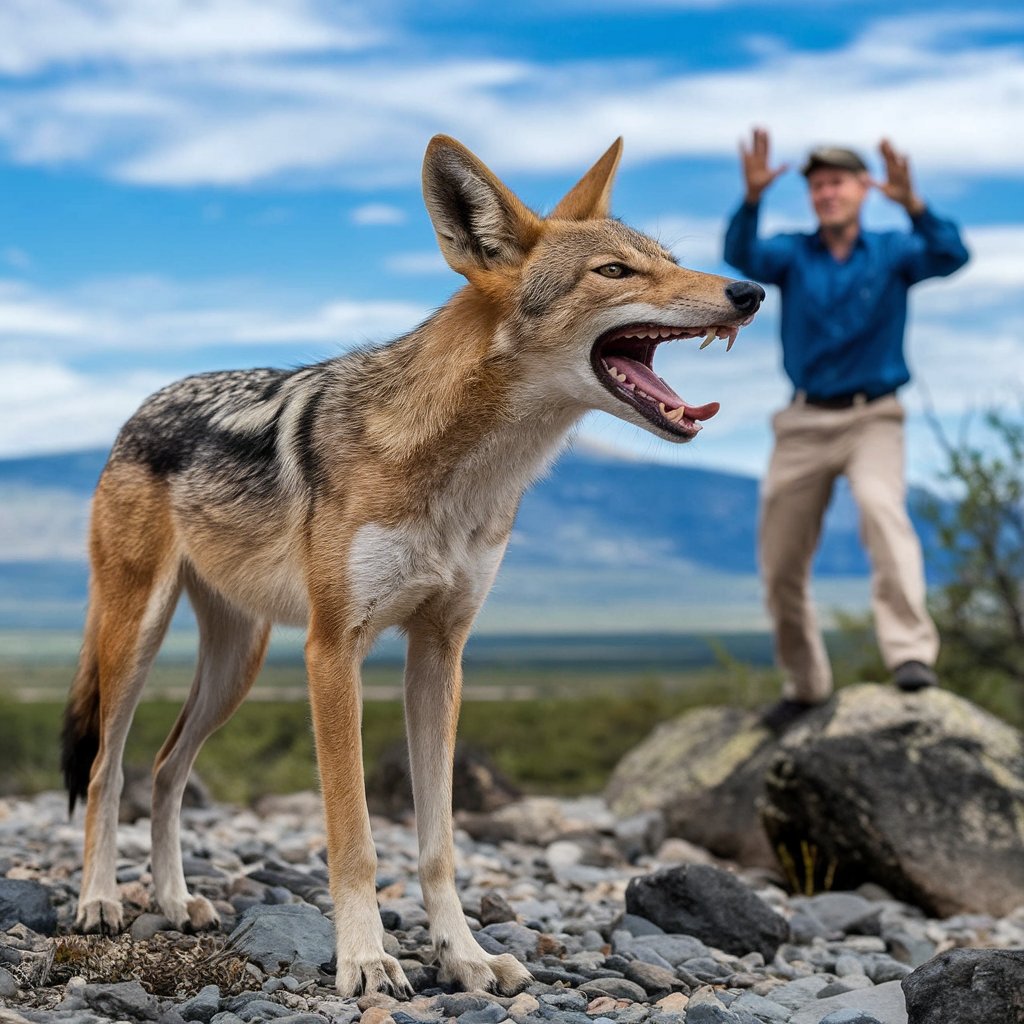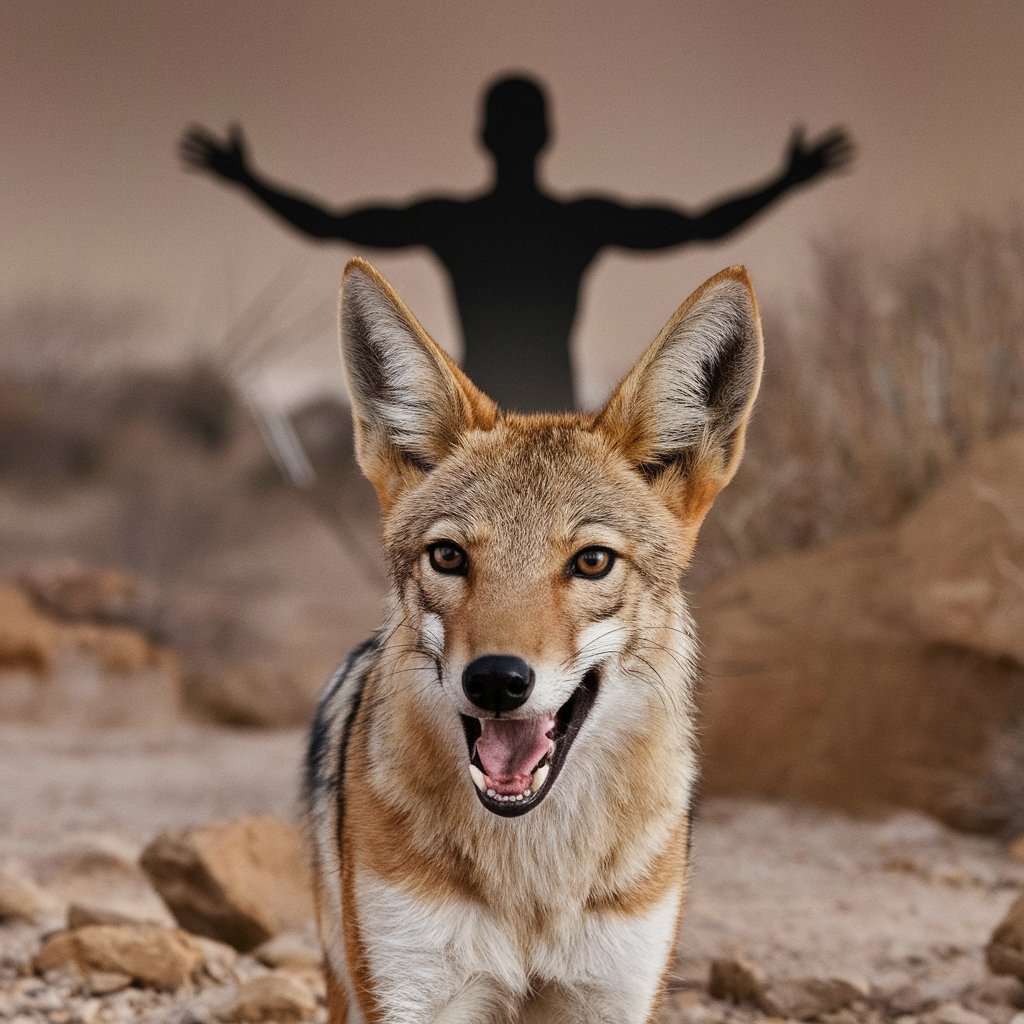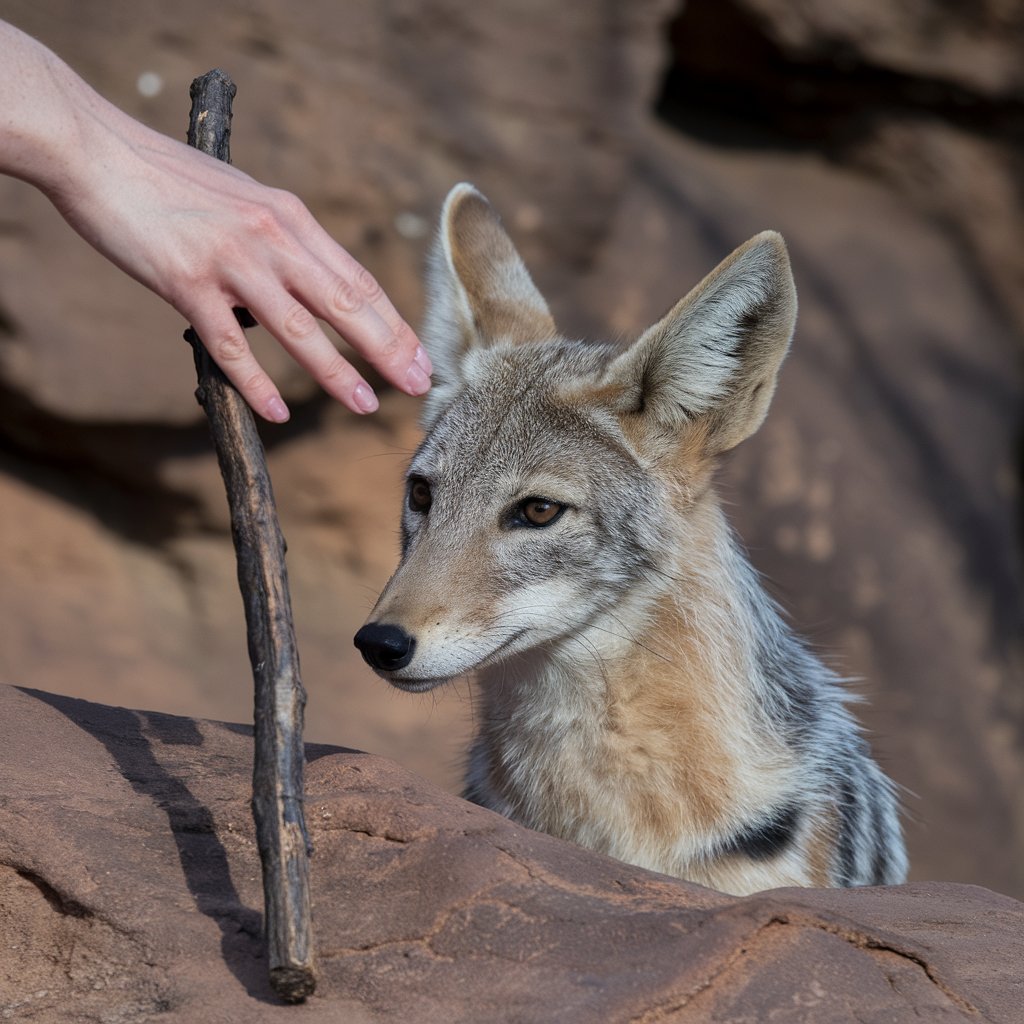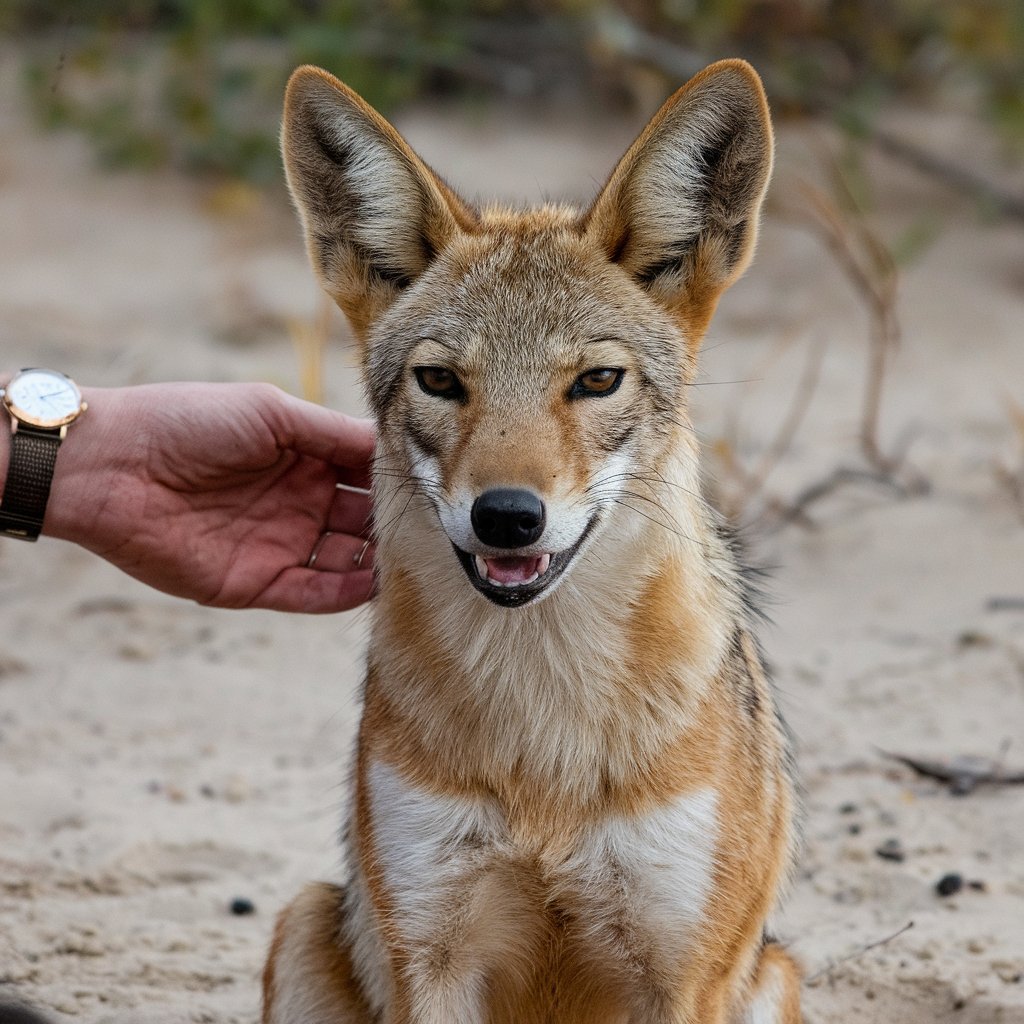The question “Do jackals attack humans?” sparks fear in many, especially when people live near regions where these animals are found. Jackals, like wolves, coyotes, and other canines, are opportunistic feeders, scavenging on whatever food they can find. But how much of the fear surrounding them is rooted in reality?
This article dives deep into jackals’ nature, behavior, and whether they pose a genuine threat to human safety.
Certainly! Below is a table that includes key facts and figures related to jackals, designed to give the reader a quick, easy-to-reference summary:
| Fact/Metric | Details |
|---|---|
| Species of Jackals | Golden Jackal (Canis aureus), Black-Backed Jackal (Canis mesomelas), Side-Striped Jackal (Canis adustus) |
| Size | 18-24 inches tall at the shoulder; weight ranges from 15-35 pounds, depending on species |
| Lifespan | Typically 6-10 years in the wild; up to 14 years in captivity |
| Diet | Opportunistic feeders: small mammals, birds, reptiles, insects, human garbage |
| Habitat | Deserts, savannas, forests, wetlands, urban areas |
| Vocalizations | Howls, yips, growls, used for communication and territorial defense |
| Rabies Risk | Rabies outbreaks can lead to increased aggression and attacks, especially in rural areas of India and Africa |
| Geographical Range | Found across Africa, Southeastern Europe, South Asia, and Middle East |
| Jackal Attacks on Humans | Rare, but may occur due to food scarcity, rabies, or territorial defense |
| Common Human-Jackal Conflicts | More frequent in India, Kenya, South Africa, and areas near urban settlements |
| Preventive Measures | Securing garbage, proper waste management, rabies vaccination for pets, community education |
What Are Jackals?
Jackals are medium-sized carnivores belonging to the Canis genus, which also includes wolves, coyotes, and domestic dogs. Despite their similarities to these species, jackals are distinct in many ways. There are three main species of jackals:
- Golden Jackal (Canis aureus): Found primarily in Africa, Southeastern Europe, and South Asia, the golden jackal is the most widespread species.
- Black-Backed Jackal (Canis mesomelas): Native to southern and eastern Africa, this species is recognized by its distinctive black coat along its back.
- Side-Striped Jackal (Canis adustus): Found in Central Africa and parts of southern Africa, this species is characterized by lighter-colored fur with side stripes.

Physical Characteristics and Behavior
Jackals typically have long, slender bodies, sharp teeth, and pointed ears. They are smaller than wolves, with most adults standing around 18 to 24 inches tall at the shoulder and weighing between 15 to 35 pounds, depending on the species. Their fur colors range from golden and brown to black or striped, depending on the species.
Jackals are omnivorous and primarily scavengers, although they also hunt smaller prey, such as rodents, birds, and insects. They are known for their nocturnal behavior, hunting during the night or early morning. Their opportunistic hunting allows them to exploit a variety of food sources, including human garbage, which often brings them into close contact with people.
Social Structure and Communication
Jackals are usually seen in monogamous pairs, though some species may form small family groups. These canines are territorial and use various vocalizations—such as howls, yips, and growls—to communicate with each other and establish boundaries. Their vocalizations play a significant role in their social structure, helping them coordinate hunting and defend their territories.
Habitat and Geographical Distribution
Jackals are found across a wide range of habitats, including savannas, deserts, forests, and wetlands. Their adaptability allows them to thrive in diverse environments, even in proximity to human settlements.
Regions Where Jackals Live
While jackals are most commonly associated with rural areas, their habitat is increasingly encroaching on urban territories. As urban areas expand, jackals are often forced to adapt to the changing environment. For example, in India, Kenya, and parts of Africa, jackals have been observed near villages, where they scavenge for food and even attack livestock in some cases. The increase in urban development has led to more interactions between humans and jackals, often resulting in conflicts.
Key regions where jackals are commonly found:
- Africa: Golden and black-backed jackals are widespread across the continent.
- South Asia: The golden jackal is common in India and Sri Lanka.
- Southeastern Europe: Golden jackals are also found in countries like Greece, Turkey, and Bulgaria.
- Middle East: Golden jackals are found in countries such as Israel, Egypt, and Saudi Arabia.
Urbanization and Habitat Encroachment
Urban sprawl has significantly impacted wildlife habitats, including those of jackals. Habitat loss, food scarcity, and deforestation have driven jackals to seek food in urban areas. This encroachment into human settlements increases the potential for conflicts, especially when food is scarce in the wild.
Do Jackals Attack Humans?
Despite the occasional report of attacks, jackals are not naturally aggressive toward humans. They are shy, cautious animals that would typically prefer to avoid human interaction. However, certain factors—such as food scarcity, rabies, and habitat encroachment—can increase the risk of an attack.
Incidence of Attacks
While attacks are rare, they do occur from time to time. According to reports, attacks are more likely when jackals are rabid or feel threatened. In most cases, however, jackals are far more interested in avoiding humans than confronting them. Even in areas with high jackal populations, incidents involving aggression are relatively few compared to other wild animals like wolves, hyenas, and lions.

Why Do Jackals Attack?
Hunger and Food Scarcity
Jackals are opportunistic feeders, meaning they will scavenge from a variety of sources, including human settlements. In regions where food is scarce in the wild, jackals may venture closer to urban areas in search of food. When jackals find food in trash bins or scraps left behind by humans, they may become accustomed to the presence of people and begin to approach more frequently.
Rabies and Disease
Rabies is another significant factor contributing to jackal aggression. Rabid jackals are highly dangerous because they may attack without provocation. Rabies leads to erratic behavior, confusion, and aggression. While rabies in jackals is not widespread, the risk of encountering a rabid jackal exists, particularly in areas where the disease is common among wildlife.
Territorial Defense
Jackals are highly territorial animals. If they feel their territory is threatened by human activity or the presence of other animals, they may become aggressive in defense of their den or young.
Human-Jackal Conflicts in Specific Regions
India
In India, golden jackals are often found near rural villages where they scavenge for food. While jackal attacks on humans are rare, incidents of aggression have been reported in areas with high jackal populations. In some cases, rabid jackals have attacked livestock, pets, and even humans.
Africa
In parts of Africa, particularly in Namibia and South Africa, jackals have been known to prey on small livestock, leading to tensions between farmers and the animals. These attacks are typically related to food scarcity and competition with larger predators.
Are Jackal Attacks Dangerous?
While the idea of jackal attacks sounds alarming, the risk to humans is generally low. Jackals are not as dangerous as some other wild animals, but there are still risks associated with encounters, particularly in regions where rabies is a concern.
Severity of Attacks
Jackal attacks, when they do happen, tend to be less severe than those involving larger carnivores. In most cases, jackals inflict minor wounds, such as scratches or bites. However, the real danger lies in the possibility of disease transmission, particularly rabies.
Case Studies of Jackal Attacks
While rare, there have been instances of serious attacks. In India, for example, rabid jackals have been known to attack both humans and livestock. Similarly, in Africa, jackals have been involved in cases of livestock predation, leading to economic losses for farmers.
Preventive Measures: How to Avoid Jackal Encounters
Although jackals are not typically dangerous, there are some steps you can take to reduce the likelihood of an encounter:
Secure Garbage and Food Sources
Jackals are scavengers, so keeping your environment free of food waste can deter them from approaching your home. Trash bins should be secured tightly, and compost piles should be kept covered. This is especially important in urban areas where jackals are more likely to venture.
Vaccinate Pets
To prevent the spread of rabies, ensure that your pets—especially dogs—are vaccinated. This is particularly important if you live in an area where jackals or other wild animals are present. Rabies vaccinations can help protect both pets and humans from potential exposure.
Avoid Leaving Food Outdoors
Food left outdoors, including pet food or food scraps, can attract jackals. Always bring food inside after meals and avoid leaving it outside overnight.

Safety Measures During Jackal Encounters
If you do find yourself in the presence of a jackal, it’s important to stay calm and know how to react:
What to Do If You Spot a Jackal
- Do not run: Running can trigger a jackal’s chase instinct. Stand still and avoid making any sudden movements.
- Make yourself appear larger: Stand tall, raise your arms, or use an object like a jacket to make yourself seem bigger and more intimidating.
- Maintain eye contact: Jackals may back off if they feel threatened, and maintaining eye contact signals that you are not afraid.
- Back away slowly: If the jackal is not aggressive, slowly and calmly retreat to a safe area.
Aggression Signs to Watch For
If the jackal begins to act aggressively, watch for these signs:
- Baring teeth or snarling
- Growling or barking
- Stiff body posture
- Ears pinned back
If you observe any of these signs, slowly distance yourself from the animal without turning your back.
Long-Term Solutions to Human-Jackal Conflicts
Habitat Preservation
To reduce human-jackal conflicts, it’s crucial to focus on habitat preservation. This includes protecting natural areas where jackals can find food and shelter. By maintaining wildlife corridors, we can help jackals avoid coming into contact with humans.
Community Education
Educating local communities about jackals’ behavior and the risks associated with rabies can help reduce fear and promote coexistence. Public awareness campaigns can teach people how to secure their environment and respond to jackal encounters safely.
Waste Management
Proper waste management can significantly reduce the attraction of jackals to urban areas. Communities should ensure that garbage is disposed of in sealed containers and that food scraps are not left out in the open.

FAQs
Are jackals aggressive towards humans?
Jackals are generally not aggressive to humans but will defend their territory if threatened. They tend to avoid human interaction unless provoked.
Are jackals friendly to humans?
Jackals are not typically friendly to humans and prefer to avoid them. If forced into contact, they may act aggressively, especially when defending their territory.
How to scare jackals away?
Using night vision to track jackals can be effective, as they may avoid bright lights or repeated sounds, especially if they have learned to avoid them.
Does a jackal bite?
Jackal bites are rare and not typically dangerous, with injuries being infrequent among those who encounter them.
Are jackals harmful?
While jackals are not usually harmful, they may become aggressive if infected with rabies or if they feel threatened or cornered.
Why do jackals cry at night?
Jackals howl at night to communicate with their pack members, not as a bad omen, though some superstitions associate their cries with misfortune.
What attracts jackals?
Jackals are drawn to areas with fresh carcasses, particularly when larger predators like lions leave meat behind. They may also scavenge at rubbish dumps.
What is jackals’ weakness?
Jackals are small compared to larger predators, which makes them vulnerable to attacks despite their agility and speed.
How do you fight a jackal?
In video games, jackals can be defeated by targeting their vulnerable legs, which forces them into defensive modes.
Are jackals violent?
Jackals can exhibit violence when competing for food or defending their territory, though they are generally not aggressive unless provoked.
Is a jackal aggressive?
Jackals are territorial and can become aggressive if their space is invaded, often fighting to defend their territory.
Are jackals intelligent?
Jackals are clever animals, often portrayed as tricksters in African folklore due to their ability to deceive and outwit other creatures.
Do jackals carry diseases?
Jackals can carry diseases like rabies, which poses a health risk to both animals and humans in certain areas.
What are 3 facts about jackals?
Jackals live in packs or alone, they are omnivores, and they are skilled hunters, even taking down animals as large as sheep when in groups.
How do you get rid of jackals?
To deter jackals, consider using jackal-proof fencing and deterrents that prevent them from accessing livestock areas.
Is a jackal evil?
While jackals are often depicted as cunning and cold-hearted in myths, they are complex creatures whose lives involve survival rather than evil intent.
How long can jackals live?
In the wild, jackals typically live 8 to 9 years, while in captivity, they can live up to 16 years.
What do jackals eat?
Jackals are opportunistic eaters, feeding on small mammals, fruits, insects, and scavenging from larger carnivores’ kills.
Are jackals loyal?
Jackals form strong family bonds, are monogamous, and older siblings help raise the younger pups, creating tight-knit groups.
Is a jackal a dog or a fox?
Jackals are part of the dog family, Canidae, and share traits with both dogs and wolves, though they resemble foxes in appearance.
Are jackals cunning?
Jackals are known for their cunning nature, often outsmarting predators and rival jackals with deceptive tactics.
Who can counter jackal?
Caveira is a counter to jackals in certain tactical scenarios, using her Silent Step ability to avoid detection by Jackal’s tracking.
What is a jackal’s enemy?
Jackals face threats from predators like leopards, hyenas, and eagles, especially when their pups are vulnerable.
Do jackals run fast?
Jackals can reach speeds of up to 40 mph (64 km/h), making them quick and agile hunters.
Why do jackals scream at night?
Jackals howl at night primarily to mark their territory and communicate with their pack, especially during the breeding season.
Can you pet a jackal?
While jackal pups raised by humans can be tamed, they are generally not social animals and avoid being petted by strangers.
How do you keep jackals away?
A line of stones along a fence can deter jackals from crossing, serving as a simple but effective barrier.
Where do you shoot a jackal?
Jackals are often hunted in areas like South Africa, where they are considered vermin by farmers.
Why is the jackal considered evil?
Cultural beliefs often associate jackals with death and misfortune due to their eerie howls and scavenging nature.
Do jackals carry rabies?
Jackals can carry rabies, especially in certain regions, where they may spread the disease to both wildlife and domestic animals.
Conclusion
Jackals, though they are often feared due to myths and occasional attacks, are generally not a significant threat to humans. While incidents do occur, they are usually the result of specific circumstances like disease, food scarcity, or territorial defense. By understanding jackals’ behavior and taking preventive measures, such as securing waste and vaccinating pets, we can reduce the risk of dangerous encounters.
The key to peaceful coexistence with jackals lies in wildlife conservation, community education, and sustainable urban planning. With these steps, humans and jackals can live side by side without fear. By learning more about these fascinating animals, we can dispel the myths surrounding them and foster a safer, more informed approach to wildlife interactions.
Read more knowledgeable blogs on Flowy Magazine

James Clair is a passionate writer and researcher with a deep fascination for animal behavior and its intricate connection to human life. With a background in [relevant field of study, e.g., zoology, psychology, ethology], James has spent years studying the natural world, focusing on how animals’ actions and instincts impact human emotions, behavior, and society.
His expertise in [specific topics or regions of focus, e.g., canine psychology, animal communication, wildlife conservation] has led to numerous published works and collaborations with renowned researchers and institutions. Through his work at Flawy Magazine, James aims to bridge the gap between scientific research and public understanding, offering insightful, accessible articles that explore the complex relationship between humans and animals.
When he’s not writing, James enjoys [personal hobbies or interests, e.g., hiking in nature, volunteering at animal shelters, photography] and is an advocate for [cause or charity related to animals or conservation]. His mission is to inspire readers to see animals not just as companions or creatures of the wild, but as beings whose behavior holds valuable lessons for us all.









